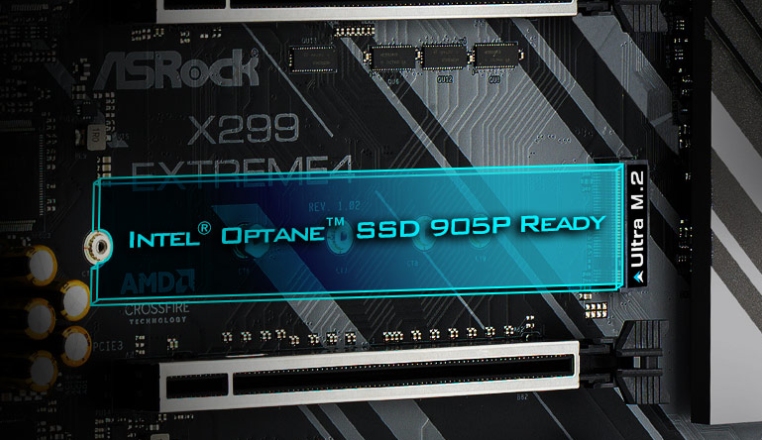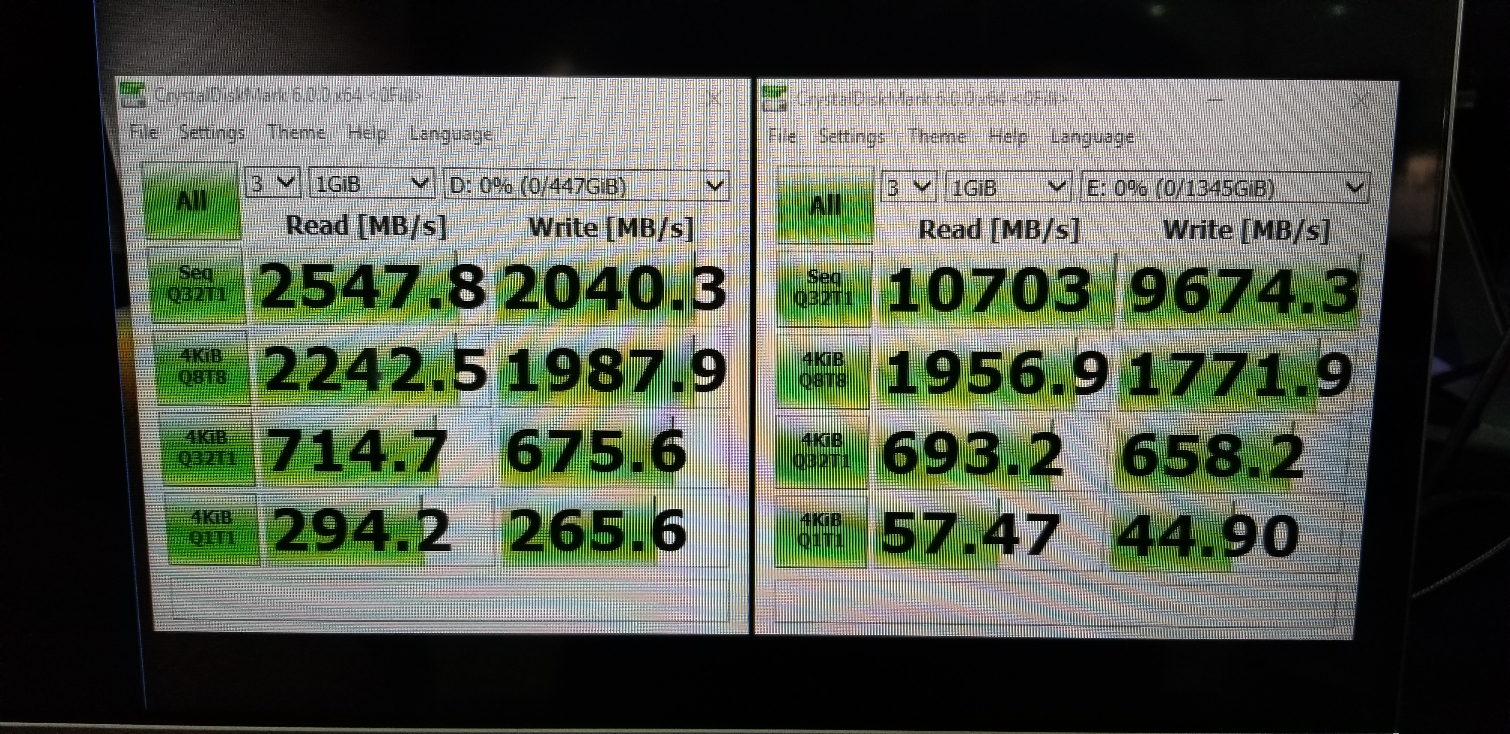ASRock's Optane 905P M.2 RAID Defies Limits
ASRock inadvertently tipped off Reddit when hidden images of Intel's 905P M.2 SSD were uncovered by eagle-eyed enthusiasts. The company, like Optane technology, reduced the latency required to bring important data to shoppers. ASRock is a strong supporter of all things Optane and has one of the best quad M.2 VROC HBAs on the market today that cools the drives and gives users the option to deliver extra power via a 6-pin VGA plug.
Combining ASRock's Fatal1ty X299 Professional Gaming i9 XE's VROC array feature and Intel's new Optane SSD905P M.2 is a guaranteed recipe for excitement here at Computex 2018.
The display is the first to show what four 380GB 905P SSDs in RAID 0 can achieve when paired with a great motherboard and an 18-core Extreme Edition to process all the data. The system chews through 10,000MB of sequential data in a single second, a 4x improvement over a single 900P 480GB Optane SSD. The drives scale well in RAID 0 with this workload, but users have to give up low queue depth random performance. ASRock's solution is to use a 480GB Optane 900P for the system's boot drive and then utilize the VROC array feature for heavy sequential workloads like intense video editing.
Intel hasn't disclosed when the 905P M.2 SSDs will hit e-tailers, but we expect to see the components before the end of 2018. Using a single drive, or an array built with several drives, is the best way to accelerate any complicated workload, but there are advantages of building the Optane storage for specific tasks in the workflow. We hope to see Intel make improvements to VROC in the future so one path delivers the best of both worlds. The feature allows us to break past the PCH limits by going around the chipset to send data directly to the CPU. Maybe Intel's upcoming 5GHz 28-core processor can get us around the low random performance of VROC.
Get Tom's Hardware's best news and in-depth reviews, straight to your inbox.

Chris Ramseyer was a senior contributing editor for Tom's Hardware. He tested and reviewed consumer storage.
-
shpankey There is no upcoming Intel 28 core 5ghz solution... this was achieved as a PR stunt from Intel by using an unrealistic phase change cooling system that no consumer will ever use. The CPU also allegedly used 1310W by itself and the phase change cooler used 1100W. Other system components not counted for.Reply -
USAFRet Note to any readers - This will not increase your FPS in BF1, so wipe the drool off your face.Reply -
Giroro Reply21034527 said:Note to any readers - This will not increase your FPS in BF1, so wipe the drool off your face.
What about my Cinebench score? -
DavidC1 RAID setups increase latency, which impacts Optane a lot. That's the reason why low QD performance suffers greatly. Better have one Optane as the boot drive, and 4x NAND NVMe SSDs for sequential.Reply -
rantoc I would def choose that non raid qd1 4k perf over the raid0 sustained max on my puters, if doing a lot of video-editing or the like the story would be another one.Reply -
Non-Euclidean If you eliminate the ridiculous last sentence, your article can be taken seriously. Adding transparent Intel fanboyism just makes us doubt everything you write.Reply -
bit_user Reply
Video editing is mostly limited by sequential access speed, to the extent it's I/O limited.21035783 said:I would def choose that non raid qd1 4k perf over the raid0 sustained max on my puters, if doing a lot of video-editing or the like the story would be another one. -
bit_user Reply
No, this was only a 18-core CPU - you're thinking of their 28-core Xeons.21036139 said:That Intel CPU is a top end Xeon that costs $10K

